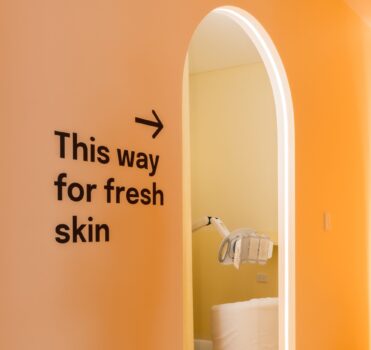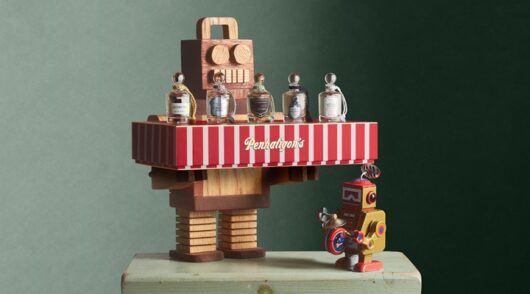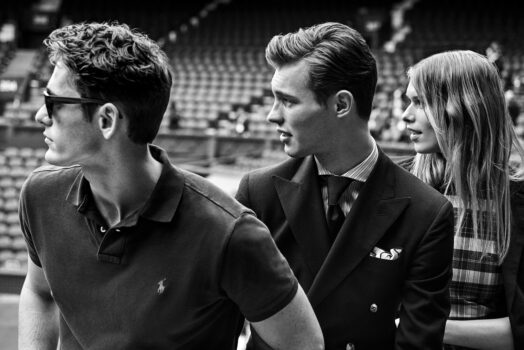If you’ve visited levels one to four of Westfield Sydney, stepped foot in one of Uniqlo’s flagship stores around the world, or had the privilege of viewing Nike’s Harajuku store in Tokyo, then you’d be familiar with the work of Masamichi Katayama, founder of Tokyo-based interior design firm, Wonderwall.
Katayama has designed more than 500 retail stores around the world, some of his most recognised works including Bathing Ape, Godiva, Dean & Deluca, Fred Perry, and Original Fake.
In a frank and open presentation to the Westfield World Study Tour, Katayama described the design process of his first Uniqlo store in Soho, New York – the store credited for securing Uniqlo a place on the global retail map.
He says the key to his success when designing retail stores, is that before anything else, he is a designer who loves to shop.
“I am 40 per cent designer, 60 per cent a customer that knows about design, but I try to see it from a customer’s point of view,” Katayama says.
Since Uniqlo’s Soho store, Katayama has designed Uniqlo flagships in London, Paris, and the latest, opened this April, at Tokyo’s Ginza – but more about the Ginza store later.
“I like to think of designing as a journey,” describes Katayama. “It makes the theory of design not so vague.
“The most important thing about designing is what the retailer can offer the consumer.
“The ending is the beginning – when the design is done, it’s just beginning for the client as they have to then translate and relate that to sales.
“A lot of designers tend to forget that it is just the beginning for the client and that is key to remember,” he said.
Uniqlo, Soho New York – the journey
It’s late February 2006 and Kashiwa Sato, creative director of Uniqlo approaches Wonderwall with a view to working together on a new flagship store concept in Soho, New York.
At the time, Uniqlo’s global image wasn’t strong, and previous attempts at international markets had ended in closures and retreats.
The goal for the Soho store was to position Uniqlo as a global brand and to use the store as a stepping stone for future international expansion.
Hesitant to take up the project, but with a keen desire to work with Sato, Katayama agreed to explore possibilities, but the schedule was tight.
In early March 2006, Katayama visited the intended site of the Soho store, and to his surprise was asked where the blueprint for the store layout was. Despite not having agreed to join the project, and in a bid not to bring down confidence, he told those asking he was working on it – and so, an alliance was built.
Searching for a point of difference within Uniqlo that other brands including the neighbouring Prada store could not offer, Katayama’s concept was to create the store using its product.
“I asked myself what Uniqlo could do that Prada could not,” he said. “Uniqlo is able to make mass volume, whereas Prada cannot.
“We wanted to reconsider what Uniqlo could do, and make the store look smaller than actual size, because it’s so huge. It’s easy to make a huge space look bigger, but much hard to make it look smaller than its actual size.”

Building on the concept of using the product to build the store, Katayama began looking at Uniqlo as selling parts, with customers completing those parts.
“We wanted to emphasise that what we sell are parts. I wanted to give a character to the walls using Uniqlo’s mass volume to demonstrate the colours and range.
“We wanted to sell the parts and make the store using the unique products as an ornament for the boutiques.
“I wanted to make the store like a supermarket and warehouse. Uniqlo doesn’t have to be Prada, it has its own uniqueness – it’s like going into a supermarket where you know what you are going for.
“For instance you can tell that a kitchen shop would only sell kitchen utensils, in a book shop, you can see lots of books so you know when you go there you know you can find the book you want to read. I wanted to express that same idea in the Uniqlo store.”
Other inspirations for the store were traditional Japanese Noa theatre, colour, and square, mosaic styles, tying back to the brand’s Japanese heritage.
With a ceiling height of six metres, Katayama settled on a staircase as opposed to an escalator. His reckoning was that if he could create a set of stairs that people wanted to climb, they would use those over an escalator.
The outcome was the insertion of a 1.5m mezzanine level, breaking up the stairs and creating a second focal point of the store – the first being a bank of mannequin torsos – now one of the key signatures of Uniqlo flagships.
The other distinctive feature of the Soho store is the bare wall behind the cashier.
“The wall attracted me. It’s difficult for designers to build something with history, but the dirty wall looked very Soho, so I asked that it wasn’t touched and left,” said Katayama.
Because he had also promised to fill the walls with product, he now had to find a reason not to cover the wall – and so, this became the cashier area, with a glass wall placed around the wall, framing it as a work of art.
The large window of the store also remained untouched, with the theory that people passing by would be pulled in from the street to the store.
Paris Opera store
The flagship Paris store, opened in 2009, is a former bank. The building was difficult, as it was unable to be altered from the exterior, and the interior cannot be seen when walking past.
Working in with these challenges, Katayama decided on a contrast of the exterior and interior, using the concept of scrolling digital signage on the stairway at the store’s entry.
“I wouldn’t say it has class, but it’s very impactful,” said Katayama.
“I wanted to use obviously Japanese technology and emphasise the contrast between the beautiful exterior and flashiness of inside.”
Uniqlo, Ginza Tokyo
The narrow, 12 storey building on Ginza’s main street is Uniqlo’s newest store, and has been the hardest Uniqlo to design yet for Wonderwall.
“People don’t want to go up 12 levels – I wanted to trick customers to think it is a six floor building from the exterior.
“I told them we have to bring content to bring people to the 12th floor.”
While driving customers upwards worked for the Soho store, it would not be possible for Ginza in the same way.
“I suggested we create a section where you only sell t-shirts, or childrens clothing, and invite a guest designer.”

The torso showcase at the entrance of the store is similar to other Uniqlo stores and an escalator was placed at the back of the store to ferry shoppers up and down.
“It doesn’t look pretty when you see an escalator at the back of the store, so we made pillars using LED lights.”
While the majority of floors are similar to what can be found in other Uniqlo flagships, there are a few differences to break the monotony.
On the kids floor, a multi-coloured checkerboard carpet has been used, in combination with warmer lighting. As a result, sales of children’s clothing have jumped from three per cent to eight per cent since its April opening.


A few floors above this lies the distinctive designer floor – which is currently a collaboration with the Undercover brand.
So just what is on this elusive top 12th floor?
It’s a space less populated by merchandise, and more by the marketing imagery of Uniqlo, and will also be used as an event space by the brand.
* This feature first appeared in the June/July 2012 edition of Inside Retail Magazine. For more stories like this, subscribe to Inside Retail Magazine’s bi-monthly print edition here.





